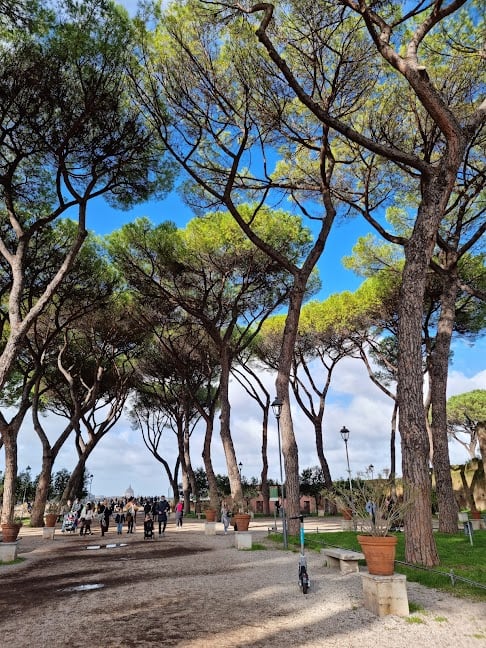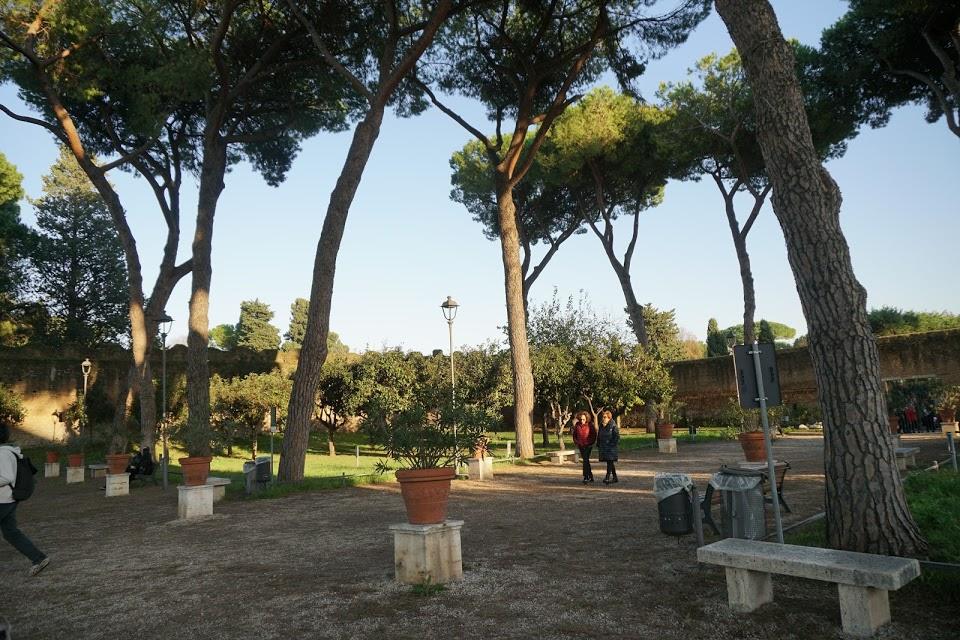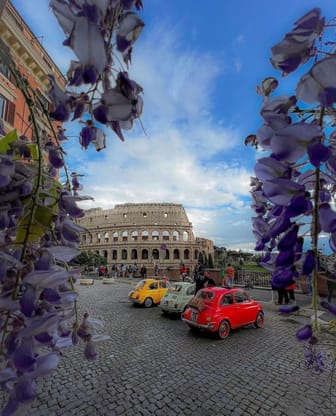Giardino degli Aranci





Ask ThatchGPT
Suggest a local expert to plan my trip
Suggest an unique itinerary for my Italy trip
What foods do Italy locals eat
What are some true hidden gems in Italy
Help me brainstorm trip ideas for Italy
Help me plan a family-friendly trip to Italy
What people say
Monica Mikhail
"The Orange Gardens, also known as the Giardino degli Aranci in Italian, is a beautiful public garden located on the Aventine Hill in Rome. It is a popular destination for both locals and tourists due to its stunning panoramic views of the city. The garden is named after the many orange trees that are planted throughout the area. These trees provide a delightful fragrance and add to the charm of the garden. In addition to the orange trees, there are also many other types of plants and flowers, including rose bushes, olive trees, and Mediterranean shrubs. One of the most prominent features of the Orange Gardens is the stunning view of the city that it offers. From the top of the hill, visitors can see many of Rome's most famous landmarks, including the Colosseum, St. Peter's Basilica, and the Roman Forum. The view is especially breathtaking at sunset when the city is bathed in a warm golden light. The Orange Gardens are also home to the famous Knights of Malta Keyhole, which is a unique viewpoint that offers a picturesque view of St. Peter's Basilica. To reach the keyhole, visitors must climb a short flight of stairs and peer through a small opening in a door. Looking through the keyhole, they will see a perfectly framed view of the basilica, surrounded by trees and other greenery."
Read more in:
Linda Miller
"The Terrazza Belvedere Aventino, also known as the Giardino degli Aranci, is a terraced garden located on the Aventine Hill in Rome, Italy. It offers stunning views of the city, including the Colosseum, the Roman Forum, and St. Peter's Basilica.
The garden is named for the orange trees that grow there. The trees were planted in the 17th century by Cardinal Scipione Borghese, who also built the terrace and used it as a private garden. It was later opened to the public in the 19th century.
The garden is home to a variety of trees and plants, including orange trees, palm trees, and cypresses. It also has a number of fountains and sculptures, including a statue of the Roman goddess Diana.
The garden is named for the orange trees that grow there. The trees were planted in the 17th century by Cardinal Scipione Borghese, who used the garden as a private retreat. The garden was later opened to the public in the 19th century.
"
Read more in:
Pedro Pereira
Available for hire
"The Giardino degli Aranci, also known as the Parco Savello, is a public park located on the Aventine Hill in Rome, Italy. It is known for its beautiful orange trees, its stunning views of the city, and its peaceful atmosphere.
The park was created in the 16th century by the Savelli family, who owned the land at the time. The Savelli family built a villa on the site, and they planted the orange trees that still give the park its name.
In the 19th century, the park was acquired by the city of Rome and opened to the public. The park was renovated in the early 20th century, and it was given its current name, the Giardino degli Aranci.
Today, the Giardino degli Aranci is a popular spot for tourists and locals alike. The park is a great place to relax and enjoy the views of the city. It is also a popular spot for picnics, weddings, and photo shoots."
Read more in:
Mentioned in these guides
About Giardino degli Aranci
Get the inside scoop on Giardino degli Aranci from local experts, travel creators, and tastemakers. Browse genuine trip notes, Giardino degli Aranci reviews, photos, travel guides, and itineraries from real travelers and plan your trip with confidence.
Phone
Save this spot for later or start mapping out a new trip today
Try our AI Travel Assistant and get instant answers to any questions about your trip.
Ask ThatchGPT


